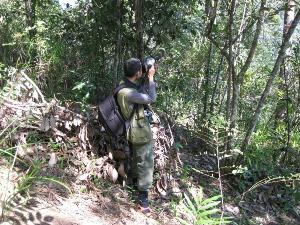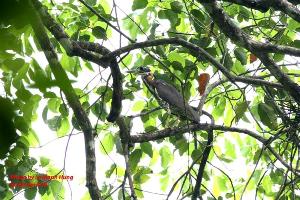Le Manh Hung
Other projects
16 Oct 2007
Building a Foundation for Monitoring and Conservation of Raptor Migration in Northern Vietnam
Our project will improve the conservation status of globally endangered White-eared Night-heron by assessing and improving the current status, understanding the ecology and biology of the species.

White-eared Night Heron Gorsachius magnificus (Ogilvie Grant, 1899) is listed in the IUCN Red List as Globally Endangered because it appears to have a very small, fragmented population that is undergoing a continuing decline. There are very few records of this threatened species in Vietnam or other countries, the most recent being four birds breeding at Ba Be National Park in April 2009 (John Pilgrim et al 2009). This was the first confirmed record at Ba Be National Park and it is therefore essential to conduct further surveys and studies to improve our knowledge of the current status, biology and ecology of the species and at the same time educate and raise awareness among the local communities at Ba Be.

Our proposed project will be an integrated work to address these problems in order to enhance the conservation of threatened birds in Vietnam. We will identify the current status and distribution ranges of White-eared Night Heron at Ba Be National Park by firstly studying the ecology and biology of the species at the national park and setting-up a long term monitoring programme. All threats to White-eared Night Heron populations will be documented, recommendations will be made for the future protection of the species and the awareness of local people and communities will be raised.
The project will be conducted at Ba Be National Park, in the northern limestone highlands of Vietnam.
This project will be one of the few studies of endangered bird species in Vietnam. Recruitment, training and coordination of team members from the national parks and local communities will help long-term monitoring of threatened and endangered bird species and spread understanding about the importance of White-eared Night Heron. Through this, more people will be aware of the importance of the species, and the impact of threats such as hunting and habitat destruction will be reduced. The project will also identify current distribution status, threats, nesting sites, collect data on biology and ecology of White-eared Night Heron in order to help conservationists and decision makers make informed decisions about land-use and infrastructure development. This information will also help national parks to develop more sustainable eco-tourism, using threatened bird species as a focus. Awareness raising among local communities will be carried out during the surveys by means of posters, videos and the birds themselves.
The results of the project will be used for follow-up activities for conservation of this species including educational programmes, campaigns to raise awareness of local communities and for further detailed research on the biology and ecology of this species.